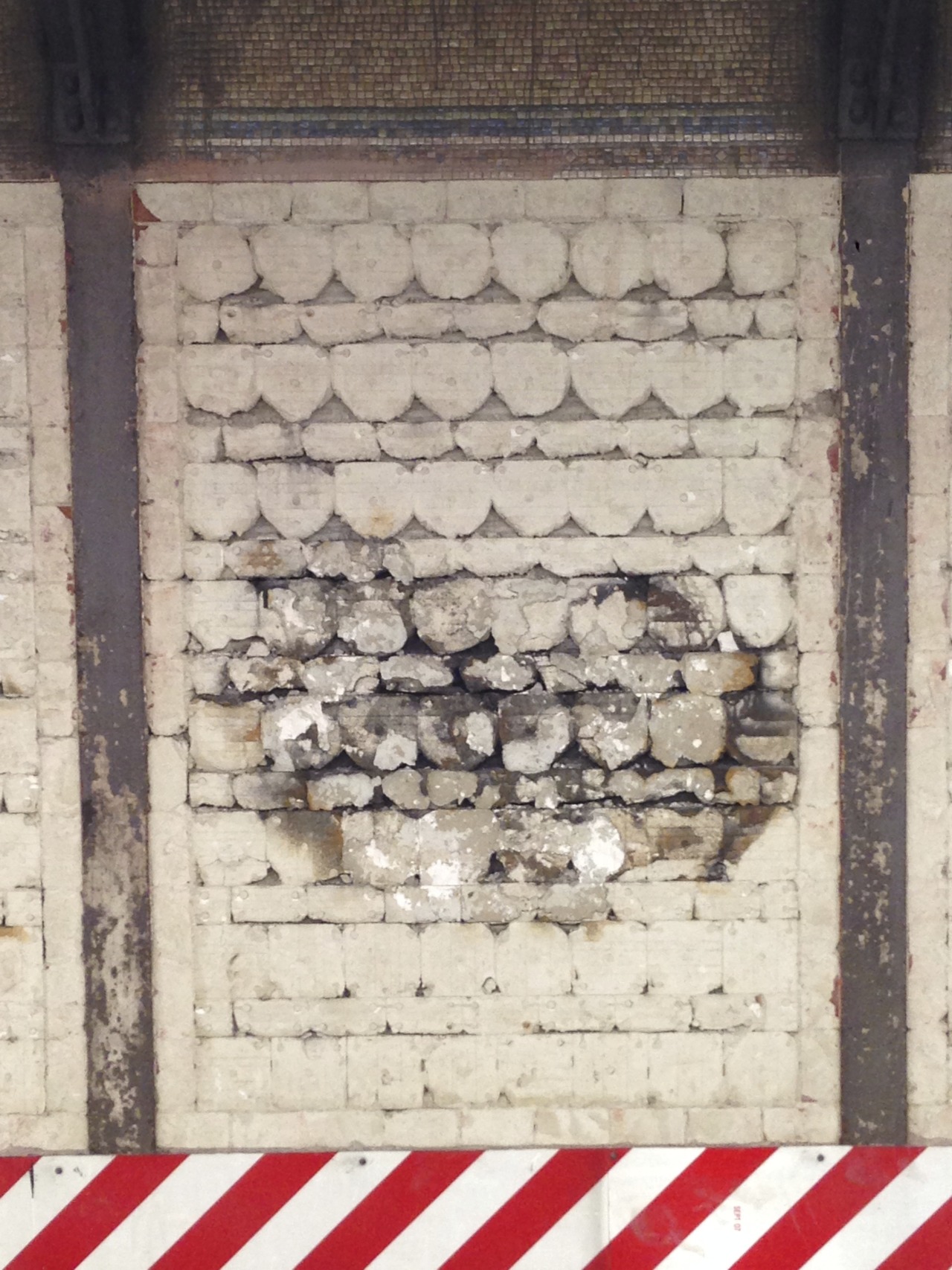
Untiled
Untiled
The NYC subway system must have one of the most extensive installations of ceramic tile in the world. And while we gawk at the incredible mosaics and the glazed panels with beavers (Astor Place) or the modern versions with hats (Ladies Mile) the miles of plain white tile are part of the legacy of cleanliness (ironic, I know) and maintainability (again, ironic) that defines the original subway system. It was once less than natural to go underground and the now-lost skylights that helped illuminate the shallow stations, along with ventilation grates that allowed riders to hear the street activity gave them less of a sense of being buried alive. The Underground was a bit more suggestive then, now it reminds us of dance clubs and our favorite internet weather site.
But that tile was almost an entirely different technology than what we use today. Now tiles thinly skin the substrate (usually Sheetrock or tile backer board) whereas tile once floated from that surface to create a perfection and precision not seen these days except in the fussiest residential installations. Tile was then like women?s dresses that floated out from the lower body creating in enormous hoop frames (as opposed to today?s tile that is more like yoga pants).
Under the tile was evidence of the craft of the artisans; mounds of cement used to support each tile and allow its minute adjustment into a perfect plane (or arc or other geometry).
That evidence reveals the human hand behind each piece of tile. When they are exposed you get as close to the craftsmen as it is possible to get.








